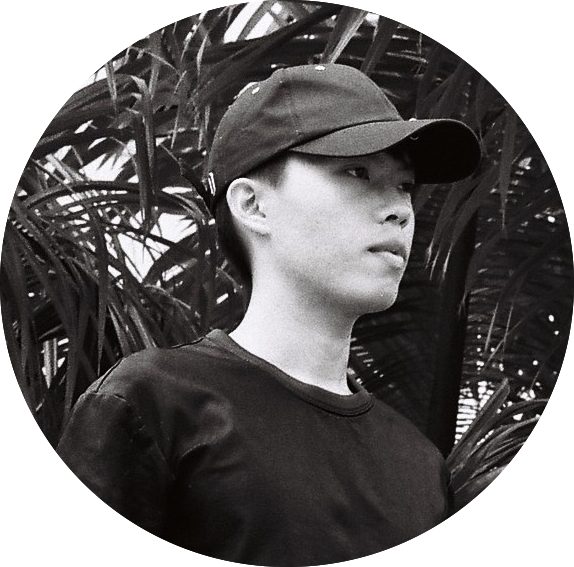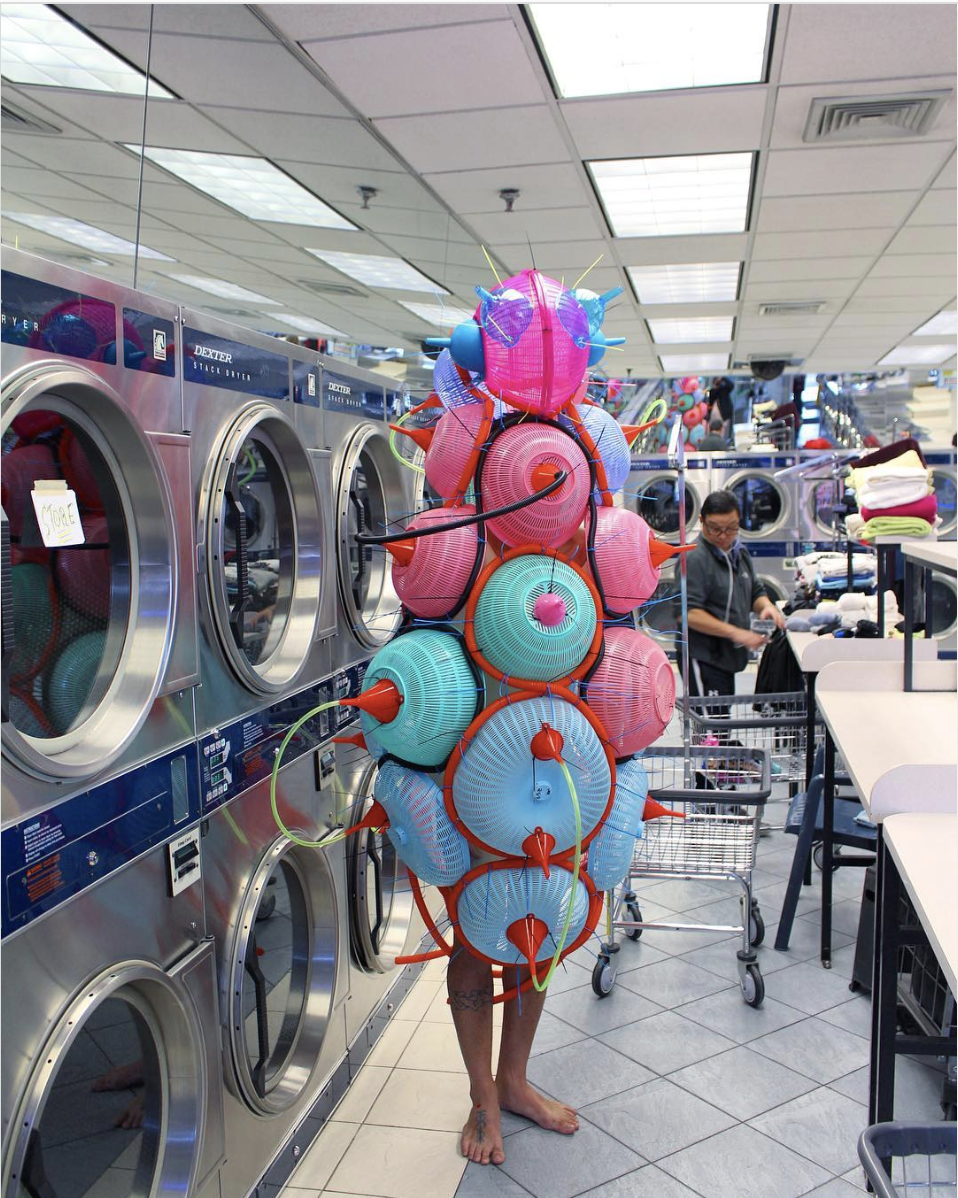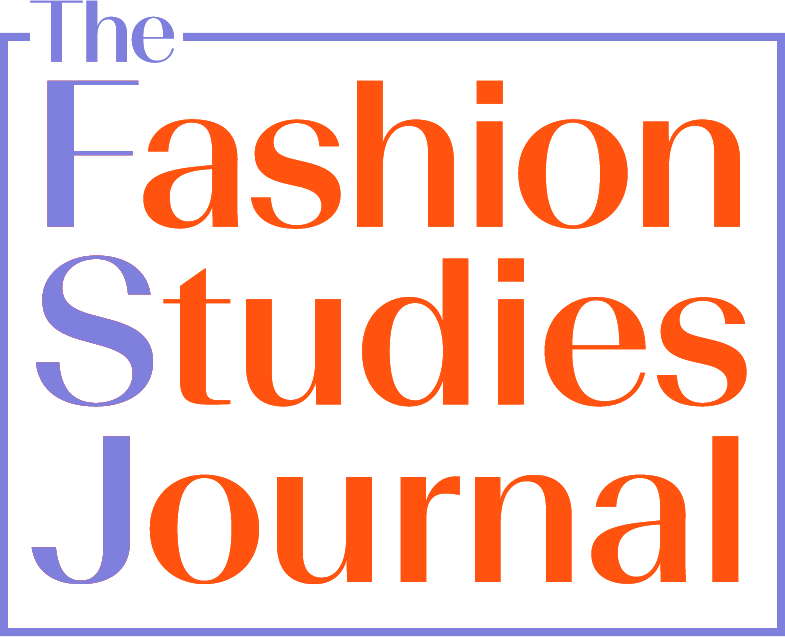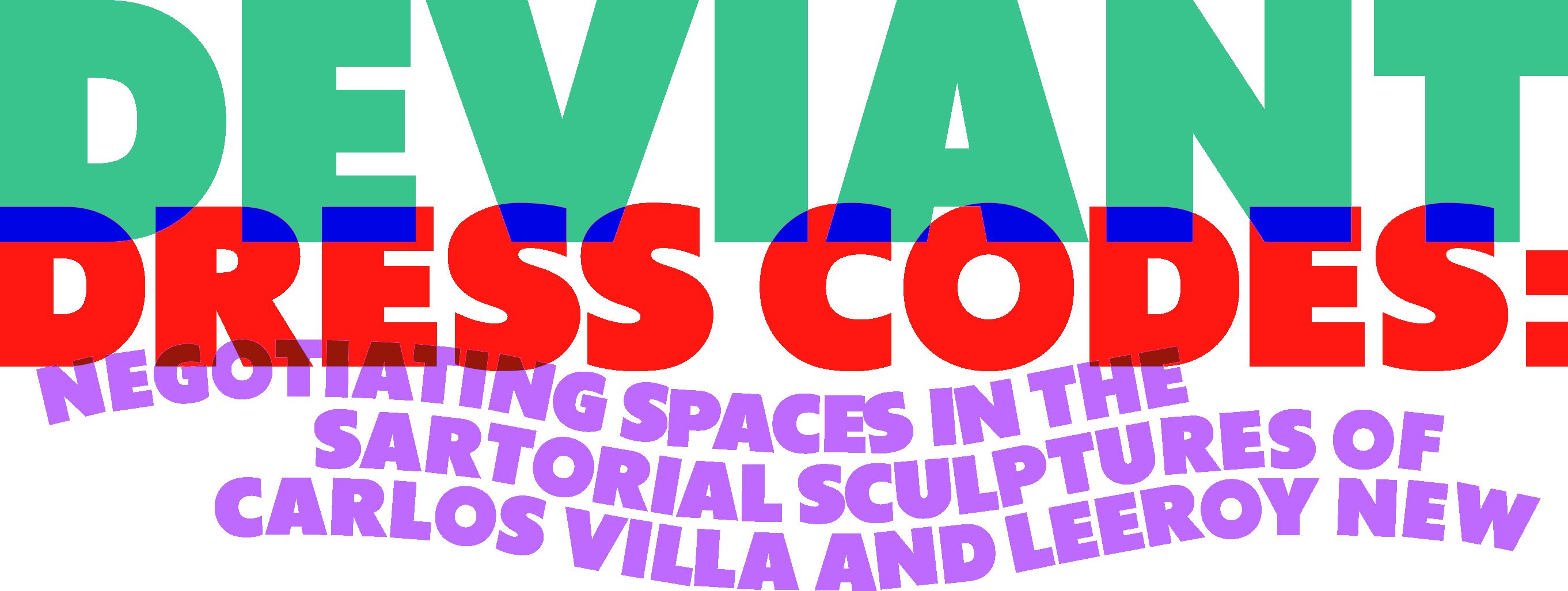![]() by Weiqin Chay
by Weiqin Chay

Weiqin Chay curates at the intersection of fashion and art. As a Singaporean, he is interested in researching postcolonial and diasporic fashion identities of Southeast Asia, especially through material and hybrid cultures. In a museological context, he conducts curatorial research on historic and contemporary fashion pieces, and has written about the exhibiting of fashion.
Weiqin graduated from the MA in Museum Studies and Curatorial Practices program at Nanyang Technological University, Singapore. His recent exhibitions include ‘Veneer and Visage’ (2022) and ‘Of Limits’ (2021), which was awarded the Platform Projects Curatorial Award, by NTU Centre for Contemporary Art Singapore.
Navigating Home Ground
The Philippines is one of the highest exporters of labor resources to the USA from Southeast Asia. In the 20th century, Filipinos’ migration to the USA was largely spurred by their military involvement with America in World War II and their fleeing the oppressive regime of Ferdinand Marcos (1965-1986). As a result, Filipinos’ migration to the USA was the most significant and sizable from Southeast Asia. The same exodus of Overseas Filipino Workers (OFW) throughout the world produces such an enormous income for the country through remittances that OFW are hailed as bagong bayani (modern-day heroes). Compounded by an extended history of Spanish colonization, interactions with Pacific Islands, and American domination in their homeland, these Filipino diasporic communities past and present have the added challenge of navigating their identities on top of assimilating into their new homeland.
For artists who have experienced migratory conditions, the diasporic body is a useful medium of expression in centering themselves. This is seen in the works of Filipino-American artist Carlos Villa (1936-2013) and Filipino Leeroy New (b: 1986), who utilize the human body as a public space and wearable sculptures as a conduit between the body and environment. In both artists’ work, the centrality of bodily expression is used to encapsulate the diaspora’s lived experience. When adapting to a new space, the body, or dress, can be the primary identifiers of difference. The artworks ‘Ritual’ (1980) by Villa and ‘Aliens of Manila: New York Colony’ (2019) by New will thus be explored within the premise of body-space relationships, as it particularly befits the reality of migrants’ sense of bodily displacement. By juxtaposing their wearable sculptures that are four decades apart, I hope to reveal a broader continuum of Filipino diasporic (art) histories across boundaries and time.
The pairing of Villa and New’s works reveals interesting notions of border-crossing not only in geographical terms but also in how their artistic practices similarly resist being confined to a singular field. Born to parents from the 1920s wave of Filipino migration to the USA, Villa experienced not only the hardship and racism faced by the generation before him, but also that faced by other Asian and Black immigrants in San Francisco where he was based. He was a pioneering and prominent Asian-American artist who wore multiple hats as an activist, curator, community organizer, and mentor for many artists, especially those of color. New, who is based in Manila, shared that his mother similarly had to move to the USA to work as a caregiver for more than a decade. His works concern the phenomenon and conditions of the Overseas Filipino Workers (OFW) who work outside of the Philippines for many years, often in roles such as domestic helper, caregiver, or seafarer, and he even considered himself an OFW too when his artistic ventures led him abroad. [1] Just like Villa, New’s multidisciplinary oeuvre includes public art, installation, set design, performance, and even wearable sculptures, straddling the borders of multiple mediums.
 | |
| Figure 1. Carlos Villa donning a feather mask and feather painted canvas coat in the performance ‘Ritual’ on April 26, 1980 at The Farm, 1499 Portrero, San Francisco. |
 Figure2. “Where am We?” -Bay’Lhan’.
Figure2. “Where am We?” -Bay’Lhan’. Wearable sculptures photographed in New York as part of the ‘Aliens of Manila: New York colony’ (2019) installation at Pintô International’s headquarters. Image courtesy of Pintô International.
A connecting thread in the mediums of both works lies in the performativity of the fashioned body. In ‘Ritual,’ [2] Villa wears and subsequently removes the coat in front of a big crowd. New, in ‘Aliens of Manila: New York Colony,’ similarly dons a plastic sculpture in the presence of the public. While art historians have highlighted the recurring use of articles of clothing in Villa’s work, and New has often talked about wearing sculptural forms, scholars have yet to discuss their works in the context of fashion. [3] In the spirit of disruptive border thinking, I use a fashion methodology to build upon and complement existing art historical research and interviews about Villa and New. This article brings together Southeast Asian art histories and western fashion theories, such as Joanne Entwistle’s seminal work on examining dress as a “situated bodily practice.” [4] Looking through the prism of her body-space concept, this essay discusses how Villa and New utilize the diasporic body as a site for transcultural identities to be negotiated, reconfigured, and thus constructed. Yet, adornments cannot be isolated from the space in which they are situated. Drawing on Entwistle’s sociological analysis, which situates the clothed body within cultural codes, I will then explore how the fashioned body interacts with space in performing transgression, alterity, and self-agency.
Diasporic Body as a Site
Villa and New, through their wearable sculptures, harnessed the transformative ability of fashion to perform states of ‘becoming.’ Since their sculptures were worn, they affectively transformed the body and allowed their embodiment of a foreign identity.
Anneke Smelik, in thinking through Gilles Deleuze and Félix Guattari’s philosophy of ‘becoming,’ posits that “de-territorialized ways of dressing” emancipate one from static notions of identity while embracing transformation and metamorphosis. [5] Change, which is the key to ‘becoming,’ thus implies the destabilizing of conventional, familiar, or normative territory. Dressing in such otherworldly forms, Villa and New fashioned their bodies with self-ascribed identities.
For Villa, ‘Ritual’ integrated multicultural sensibility with unconventional materials to reconstruct his body. By obscuring his body and even his visage, Villa forced the viewer to interact with the adornment’s visual cues. The canvas with swirling blue patterns was shaped like a Catholic vestment, which was not unfamiliar to most Filipinos’ Catholic upbringing. Its otherwise distinct T-shape silhouette was interjected by protruding feathers which appeared to be a “nod to his Austronesian lineage.” [6] Observing how Villa attempted to trace these Filipino roots, fellow artist and curator Amalia Mesa-Bains suggested that his feather vestments stemmed from wanting to reclaim garments of power in their pre-colonial, indigenous histories. [7] Yet, perhaps unidentifiable to the audience, his references also drew from “other Oceanic cultures, from Native American and African art,” which to me reflected not only the centuries of cross-cultural contact in Philippine’s history but also the syncretic identities of Filipino-Americans, especially in San Francisco then. [8]
If Smelik’s deterritorialized fashion centers on upending fixated impressions of a body, then Villa’s vestment likewise blurs cultural boundaries to facilitate multiple becomings. By fashioning the coat with hybrid visual signifiers, he confronted Western viewers to take a ‘culturalist’ lens to decode and appreciate the notion of a foreign culture that is pluralistic and fluid. Donning the assemblage of material references also became a sartorial expression of solidarity with other non-Western cultures, a phenomenon which art historian Margo Machida has coined ‘culturalist conceptualism.’ The bodily sculpture became a wearable portal, connecting the body with multiple animistic, historical, and cultural roots.

| Figure 3. ‘Venus of Jackson Heights,’ ‘Aliens of Manila: New York Colony’ (2019) Instagram caption: “I prefer hand-washing myself. I’m not used to washing machines or dishwashing machines or whatever other washing machines they have.” |
New emphasized this state of alienation through the outlandish plastic attire. Fashioned from the same humble material used by service workers, these were procured and repurposed from recycling centers or dollar stores in migrant communities. Indeed, by putting himself in the shoes of his mother or other immigrants who obtained items from these places, the materiality of ‘Aliens of Manila’ embodies the marginal conditions of OFW who have to be resourceful and adaptable in a foreign land. Plasticity as a methodology, to me, implies pliancy, resilience, and even draws attention to the plasticity of a diaspora’s dual identities between home and host countries. Smelik’s claim that deterritorialized fashion “push[es] the boundaries of what a body could do, unleashing normative ideas of what a body should look like,” is likewise seen in New’s alien forms. An array of plasticity, the daily objects such as colander, cable ties, pipes, and funnel, morphed the body beyond recognition. [9] The aliens took over the body in portraying the sense of displacement and challenges of assimilation faced by OFWs, the same way that Villa embedded cultures from migrant communities.
In both expressions of New and Villa’s diasporic body, we notice how the centrality of body as a primary locus is key to recentering the diaspora’s peripheral and othered identity. The concept of grotesque fashion written about by Francesca Granata dovetails well with this otherness and Smelik’s ‘becoming’ in helping us understand how self-agency is performed. That is not to say that I would characterize their works as ‘unsightly.’ Rather, I find their deliberate staging of an ‘over-dressed’ incongruence, foreignness, and alienness corresponding to Granata’s grotesque which she observes as a phenomenon of reversal and of unsettling ruptures of borders, in particular bodily borders. The grotesque body is an open, unfinished body, which is never sealed or fully contained, but it is always in the process of becoming and engendering another body. [10]
Through experimental fashion, she illustrates how the grotesque transgresses expected silhouettes of fashion and bodies. Viewed through her lens, Villa’s assemblage of cultural hybridity and New’s plastic creature showed the body defying borders while harnessing the potential of porous identities. It is through subverting familiar expectations of the fashioned body that the grotesque opens up space for “resignification of the norms.” [11] In their ensembles, concealing the wearer by embedding material allegories enabled a total re-territorializing into the space of make-believe.
Fashioned Body Within a Space
Thus far I have discussed the wearable sculptures as static objects that frame the body. It is important to note that this body is in turn framed by space. The act of wearing enacts and activates the pieces within situated contexts, beckoning a closer examination of bodily interactions with space – which is especially poignant when talking about the displacement of diasporic communities.

| Figure 4. Villa painting with his nude body in front of some 200 viewers throughout that day. |

Figure 5. Poster of Kanyao: A Tribal Celebration where ‘Ritual’ was performed.
Unlike our everyday clothes, Villa and New’s states of dress were intentionally differentiated from how the onlookers dressed at the venue. At the Kanyao celebration held at The Farm (an alternative art space with farm animals and crops), Villa disrobed from the vestment and proceeded to perform ritualistic actions in his bare body. [12] In his state of undress, he left behind the array of contrived cultural symbols on the garb, baring his rudimentary identity that was his skin. His nudity among the clothed audience further conveyed a sense of ‘primitivism’ which underscored his identity as a foreigner to Western eyes. In a methodical fashion, he smeared his body with paint and blood before proceeding to make gestural imprints onto a canvas with his body. The interplay between his state of dress and undress can be understood by Entwistle’s situating dress within orders of social spaces, explaining that “when we dress, we have to orientate ourselves to the implicit norms of these spaces.” [13] Instead of dressing to fit in as Entwistle describes, Villa and New, by being nude or extra-terrestrial, refused the social dress code. They “flout the conventions of their culture and go without the appropriate clothes.” [14] In the same way that aliens situated in the quotidian jolts the norm, Villa’s unclothed body in a farm would have been visually arresting for the audience. Parallels can be seen in how Villa and New staged their fashioned bodies out-of-place, as they were surrounded by passersby and an audience dressed very differently (or rather, normally).
 Figure 6. ‘Tug-Li Bong Arguing with Sky’, ‘Aliens of Manila: New York Colony’ (2019). Image courtesy of Pintô International.
Figure 6. ‘Tug-Li Bong Arguing with Sky’, ‘Aliens of Manila: New York Colony’ (2019). Image courtesy of Pintô International.Just as Villa bared his body, New’s aliens also exposed the state of alienation of communities on the periphery of the urban landscape. The aliens invaded localities such as Jackson Heights and Chinatown in New York City that have a rich history of migration, starkly contrasting themselves from the human spaces to highlight the identity of foreignness in displaced individuals. Relating New’s sculptures to space, we can understand that varying levels of place culture can be assimilated through wearing locally found objects. While Villa revealed his identity through his skin, New’s household objects worn in a public space brought to light the domestic labor of OFWs. This is especially relevant when many OFWs work as kasambahays (domestic helpers). In an interview, New claimed that having these “displaced bodies” infiltrate public spaces symbolized “people’s struggle to reclaim and occupy more and more the spaces that are meaningful to them.” [15] It is thus salient that Filipino diasporic artists position their (un)dressed body in a locale to symbolically carve out interstices where identities otherwise alien are reclaimed.
It is pertinent to note that the 1934 Tydings-McDuffie Act, which granted Philippines’ independence from American colonization, also reclassified Filipinos from ‘U.S. Nationals’ to ‘aliens,’ barring their entry into the USA. Being born around this transitory period, Villa would have had a strong postcolonial Filipino’s sense of being alienated in the USA. [16] Similarly, New’s portrayal of alienation felt by OFWs today, four decades after Villa’s ‘Ritual,’ points to some lingering legacies of transnational movement that could be traced to colonization.
Conclusion
 Figure 7. Villa performing ‘Ritual’ (1980) in a state of trance and covered in paint.
Figure 7. Villa performing ‘Ritual’ (1980) in a state of trance and covered in paint.  Figure 8. ‘Ma. Buhyan Journeys to the Afterlife’, ‘Aliens of Manila: New York Colony’ (2019).
Figure 8. ‘Ma. Buhyan Journeys to the Afterlife’, ‘Aliens of Manila: New York Colony’ (2019). Image courtesy of Pintô International.
In the midst of writing this, I was contemplating the debate on the terms ‘Filipino’ and ‘Filipinx.’ While ‘Filipinx’ is welcomed by Filipino-Americans in recent years as a gender-inclusive term, opponents argue that it views language through a Western lens, when ‘Filipino’ is already gender-neutral and commonly used in my region. Though it is not within the scope of this article to discuss linguistics, this example points to the multiplicity and intersectionality of Filipino diasporic identities in different parts of the world, especially when border-crossing and cross-cultural contact inform a big part of Filipino culture. [17] It also alludes to the ongoing negotiation of decolonization that Villa and New best express through the wearable medium.
While fashioning place and cultures on the body, their assimilation at once acknowledged the existing Western frameworks and disrupted them with their own sensibility. As a playful riff on Brandon Stanton’s ‘Humans of New York,’ the ‘Aliens of Manila’ conversely explored the dehumanizing effects of social problems. New is aware of “problematizing the infectivity or inefficiencies of existing art systems. Like the gallery and museum system, [as] adapted concepts from our colonizers or the global powers.” [18] As such, the guerrilla tactics of urban intervention and activating the medium of bodies as public spaces could be seen as disrupting modes of presentation inherited from the West. In similar fashion, Villa’s bodily action and dress form were not without the cognizance of Western art movements. His ‘action painting,’ a method popularized in the West (think Jackson Pollock), also paralleled the rise of performance art in the 70s. [19] In defying Western traditions of painting on stretched and framed canvas, Villa not only painted on unstretched canvas but also transformed it into a wearable piece in which he embedded his own identity in a phenomenological and embodied way. Revealing his awareness of “Frank Stella’s shaped canvas,” he likewise tackled the formal techniques by weaving his own culturalist conceptualism into the vestment, thereby grounding his voice within Western frameworks. [20]
Both artists adopted the wearables’ ability not only for transmuting the body, but also the potential to carve out interstices that interrogate Western art systems. In search of the Filipino roots, New references mythology, especially from the Bagobo of South Mindanao, as you can see in the aliens’ names derived from goddesses (Mebuyan, Tuglibong) and a shaman (Babaylan). In contrast, Villa’s globalist impulse traces the sensibility of multiple communities, rather than a specific source. Despite the differences, congruent in both ‘Ritual’ and ‘Aliens of Manila’ are the affinity for embedding the costumes with pre-colonial histories. In so doing, they reconsidered the complexity of Filipino national identities that have been mired by colonial histories and created a wearable third space in which the diasporic body reclaims agency by subverting hegemonic conventions. [21] Carlos Villa and Leeroy New are seemingly disparate artists from different places and generations. By highlighting their similarities, addressing the body as a site and in relation to space, I hope to contribute ways of thinking across boundaries. For Filipino identities are not fixed in space and time; the artists, both in the Philippines and the USA, navigate between the margin and center by fashioning the lived experience to create interstices of empowerment. It is through the bodily, sartorial, and spatial mediums that Filipino diasporic subjectivities are creatively reclaimed.
Notes: Deviant Dress Codes
[1] Elisabetta Garletti, “Dressing the Aliens of Manila: Elisabetta Garletti in Conversation with Leeroy New,” Decorating Dissidence, February 8, 2021, decoratingdissidence.com/2021/02/08/in-conversation-leeroy-new/.
[2] View the performance at: Theo Gonzalves, “Ritual, performed by Carlos Villa at The Farm, 1980”, Youtube, Jun 15, 2014, youtube.com/watch?v=YHb2qeNprzw.
[3] The works ‘Song of the Islands’ (1969-1971), ‘Painted Cloak’ (1970-1971), and ‘The Source’ (1971) appeared as capes; ‘Artist’s Feet’ (1978), as a pair of shoes; and ‘Kite God’ (1979), a coat.
[4] Joanne Entwistle, The Fashioned Body: Fashion, Dress & Social Theory (Cambridge: Polity, 2015), xi.
[5] Anneke Smelik, “Gilles Deleuze: Bodies-without Organs in the Folds of Fashion,” in Thinking through fashion: a guide to key theorists, eds. Agnès Rocamora, and Anneke Smelik (London: I.B. Tauris, 2016), 165–183.
[6] Lian Ladia and Chloe Chu, “Carlos Villa: Not Sorry,” in ArtAsiaPacific, Issue 118, May/June 2020, 48
[7] Amalia Mesa-Bains, “Carlos Villa The Common Cape,” in Fresh Talk, Daring Gazes: Conversations on Asian American Art, ed. Elaine H. Kim (Berkeley: University of California Press, 2003), 160.
[8] Peter Selz, “Carlos Villa at SFMOMA Artists Gallery,” in Art in America (1939), (New York: Brant Publications, Inc., 2006), 169.
[9] Smelik, 174.
[10] Francesca Granata, Experimental Fashion: Performance Art, Carnival and the Grotesque Body (London: I.B. Tauris, 2017), 19.
[11] Ibid., 5.
[12] The Cañao (or spelled Kanyaw) is an indigenous ritual from the Northern Luzon involving animal sacrifice and performances. Male performers would wear loincloth called ‘bahag’ or ‘wanes’, rather than going nude like Villa. The Kanyao tribal celebration poster is on view in the 360° virtual exhibition digitized from ‘Carlos Villa: Worlds in Collision’ exhibition at the Newwark Museum of Art (Feb – May 2022).
[13] Entwistle, 34.
[14] Entwistle, 7.
[15] Osman Can Yerebakan, “Leeroy New: Aliens of Manila,” The Brooklyn Rail, May 2019, brooklynrail.org/2019/05/artseen/Leeroy-New-Aliens-of-Manila
[16] Carlos Villa was born in 1936. The Filipino Repatriation Act was enacted in 1935.
[17] The choice of ‘Filipino’ in this essay considers the zeitgeist around Villa in the 1970s, and both artists’ pronouns.
[18] Patti Sunio, “Inside the Mind of Leeroy New,” Fame+, accessed Mar 10, 2022, fameplus.com/touchpoint/inside-the-mind-of-leeroy-new.
[19] University of California Press, “Book Discussion of Carlos Villa: Worlds in Collision”, Youtube, Mar 3, 2022, youtube.com/watch?v=8rv7gIXrUbM.
[20] Theodore S Gonzalves, Carlos Villa and The Integrity of Spaces (San Francisco: Meritage Press, 2011), 15.
[21] See Fashion and Postcolonial Critique (2019) edited by Elke Gaugele and Monica Titton for Homi K Bhabha’s concept of ‘Third Space’ contextualized in fashion.
Issue 15 ︎︎︎
Fashion & Southeast Asia
Issue 14 ︎︎︎
Barbie
Issue 13 ︎︎︎ Fashion & Politics
Issue 13 ︎︎︎ Fashion & Politics

